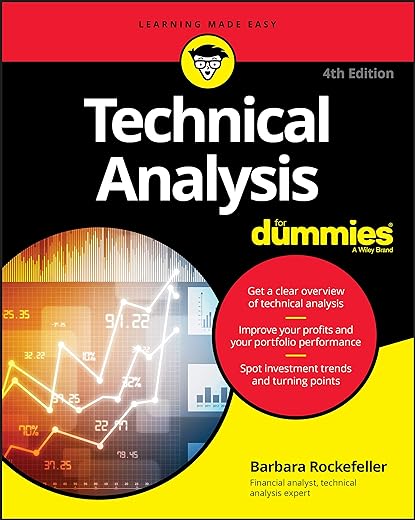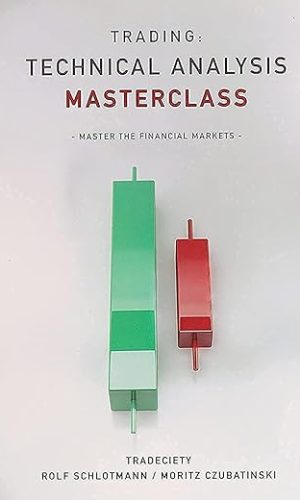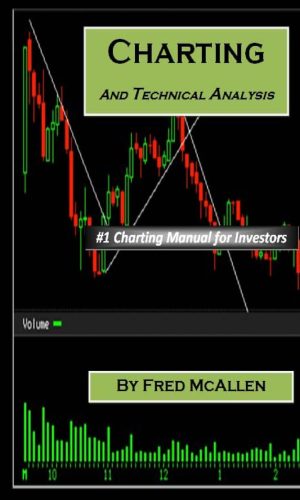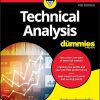Technical Analysis For Dummies, 4th Edition
£16.50£20.90 (-21%)
Grasp and apply the basic principles of technical analysis
Savvy traders know that the best way to maximize return is to interpret real-world market information for themselves rather than relying solely on the predictions of professional analysts. This straightforward guide shows you how to put this into profitable action―from basic principles and useful formulas to current theories on market trends and behavioral economics―to make the most lucrative decisions for your portfolio.
The latest edition of Technical Analysis for Dummies includes a brand-new chapter on making the right decisions in a bull or bear market, an updated look at unique formulas and key indicators, as well as refreshed and practical examples that reflect today today’s financial atmosphere.
- Become an expert in spotting market trends and key indicators
- Get the skinny on the latest research on behavioral economics
- Take a deep dive into how to read market sentiment and make it work for you
- Get a look at the first innovation in charting for decades―straight from Japan
With comprehensive coverage from charting basics to the cutting edge, Technical Analysis for Dummies includes everything you need to the make informed independent market decisions that will maximize your profits. Happy trading!
Read more
Additional information
| Publisher | 4th edition (13 Sept. 2019), For Dummies |
|---|---|
| Language | English |
| Paperback | 384 pages |
| ISBN-10 | 1119596556 |
| ISBN-13 | 978-1119596554 |
| Dimensions | 18.54 x 2.54 x 23.37 cm |












by Marie Kasaz
I am still reading it but I am very pleased with it so far, clarifying some stuff I thought I already knew and teaching me more, the author clearly knows her stuff. the book arrived promptly
by Dr W. H. Konarzewski
Barbara Rockefeller writes clearly, and amusingly, for much of the time. But sometimes she seems to get bogged down and rambles. Maybe there are some aspects of technical analysis (TA) she finds boring. And fair enough. Some of it is pretty laborious and geeky. She compensates though with some snappy observations and personal advice that I found particularly helpful. One cannot accuse her of not knowing her subject. For some reason, William O’Neil’s ‘cup and handle’ pattern is not mentioned in the index, which is something of an oversight given the pattern’s popularity.
For me, the greatest weakness of the book is the lack of colour. It’s nearly 2021, for goodness sake, and most of us are used to having coloured lines on our charts, especially things like the MACD. The chapter on the Ichimoku Cloud is almost hilarious because she has to describe the pink and green clouds, and the 5 different lines without mentioning colour – her efforts are valiant but in the end the chapter is nearly incomprehensible to a beginner. It’s a bit like describing colour to a blind person. To be fair the fault lies with the publisher and not the author.
Overall this is a good book but it helps to have a good idea of moving averages. candlesticks and chart patterns before starting. Is this a book for dummies or beginners? Probably not. My advice to beginners would be to watch a few Youtube videos on technical analysis (there are hundreds of them, not all of them bad), and then read the book.
by Olli
Got to chapter 3 and gave up having to start with a different book. Not written in a friendly way for beginners what so ever but will come back to it…maybe.
by Hercules
Informative
by ぴよたま
I guess Barbara must really know what she’s doing to be able to get this published, because it’s terribly written. And I don’t mean it’s too technical (I hold a physics degree, so I’m used to formulae and charts). It’s just poor writing. For example:
– “Remember” and “Idea” points are supposed to highlight key ideas, but this author uses them for rambling paragraphs that sometimes add little.
– It suffers from general wordiness. I bet she could half the number of words in the book.
– I’ve found several grammatical errors throughout the course of the book, such as hyphenating “more-efficient”. There are a few other inconsistencies that make the book difficult to read throughout.
– She spends the first two chapters pretty much just defending Technical Analysis from would-be critics. I get it. It’s not perfect. I picked up your book, so I’m already giving you the benefit of the doubt.
– The above point is extra strange considering that she talks about making predictions using the moon, stars and sunspots in chapter 18. I understand that it’s good to keep these things in mind because people are irrational, but it came off as a bit silly after all that defending at the start.
There’s more, but you get the gist. It doesn’t feel like it’s seen a professional editor. This book is a good starting point for technical analysis, but it needs serious editing before it should be valued at its current price.
by Carl B.
For a more in-depth view once you decide if you are a technical or fundamental trader